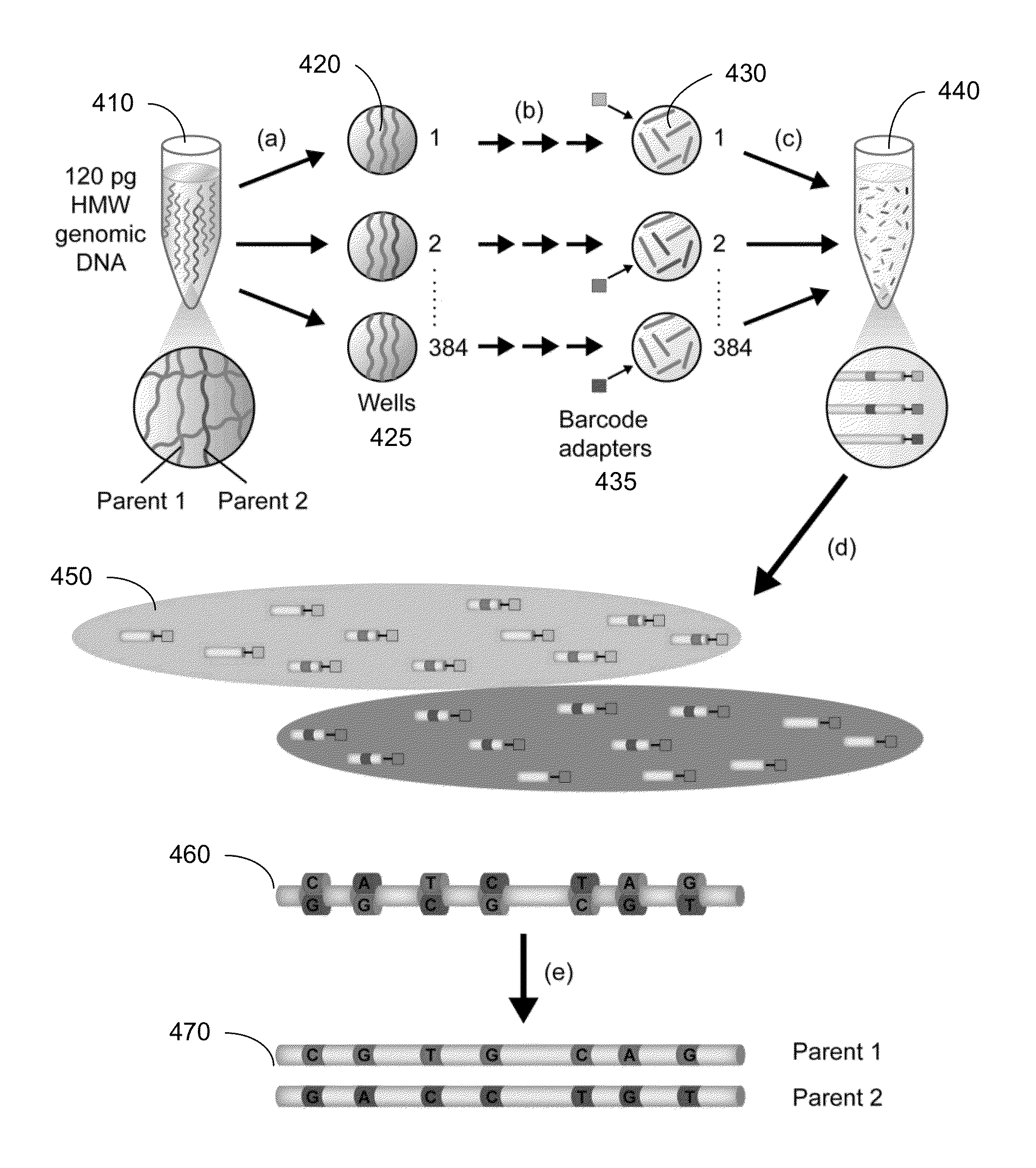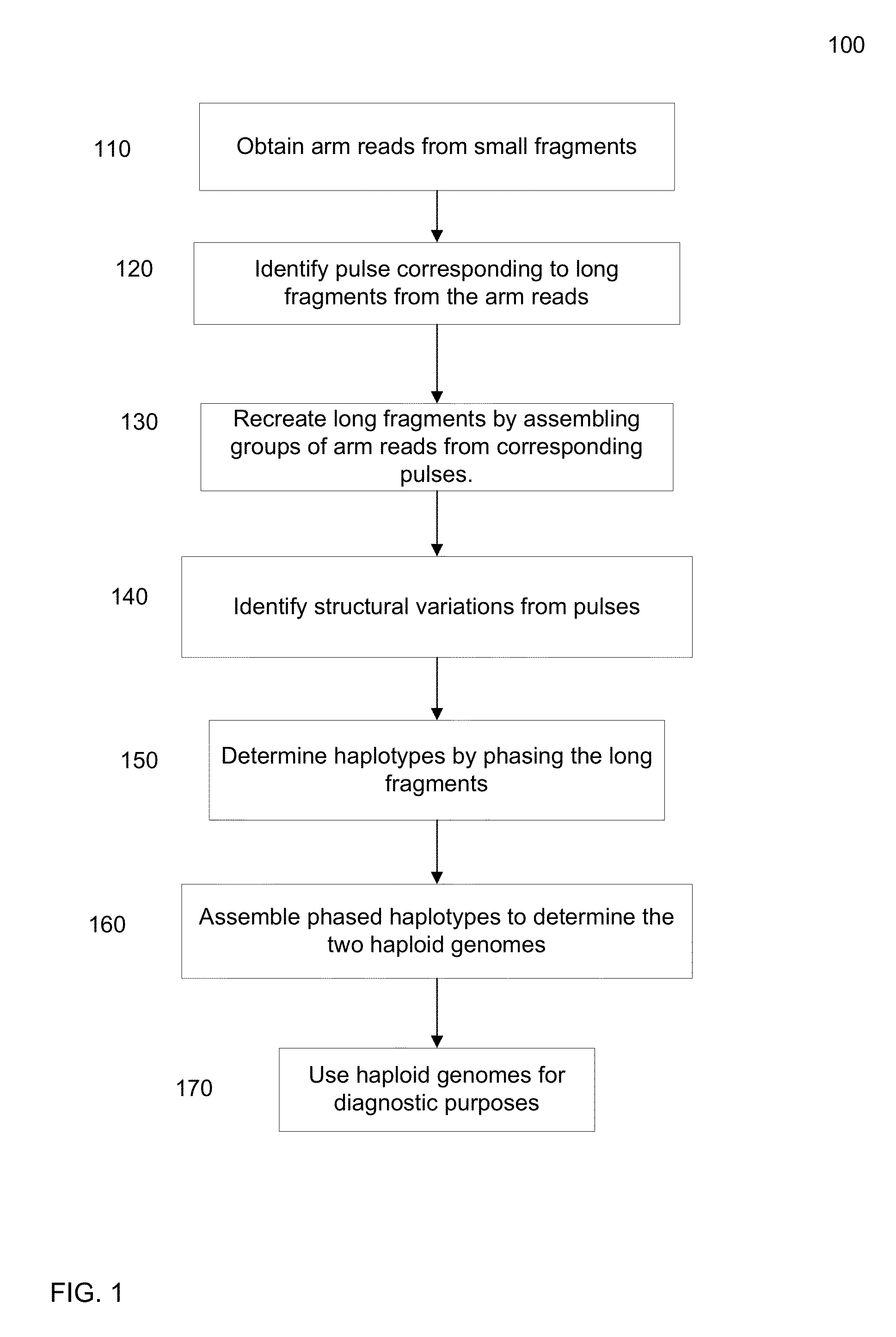Identification of DNA fragments and structural variations
a technology of dna fragments and structural variations, applied in the field of genomic sequencing, can solve the problems of short sequence data, increased cancer risk, and inability to easily identify the haploid genom
- Summary
- Abstract
- Description
- Claims
- Application Information
AI Technical Summary
Benefits of technology
Problems solved by technology
Method used
Image
Examples
Embodiment Construction
[0045]As described above, it can be difficult to obtain detailed information about the haploid genome of a diploid organism from a biological sample of the organism, at least at a commercially viable cost and speed. For example, short sequence reads provide low cost, but are difficult to assemble into a haploid genome (i.e. the two respective haplotypes of the diploid genome). Embodiments can identify a group of short sequence reads that are from a same long fragment (e.g., part of a same pulse), e.g., by denoting which well the short read is from. The genomic location of a group of short reads can be used to identify the location of the long fragment (e.g. using a histogram of genomic coverage). The pulse can be filled in with the short sequence reads to obtain at least a partial sequence of the long fragment. These long fragments can then be used to determine the haploid genome in a more efficient manner than by using the short sequence reads directly.
[0046]Additionally, these pul...
PUM
 Login to View More
Login to View More Abstract
Description
Claims
Application Information
 Login to View More
Login to View More - R&D
- Intellectual Property
- Life Sciences
- Materials
- Tech Scout
- Unparalleled Data Quality
- Higher Quality Content
- 60% Fewer Hallucinations
Browse by: Latest US Patents, China's latest patents, Technical Efficacy Thesaurus, Application Domain, Technology Topic, Popular Technical Reports.
© 2025 PatSnap. All rights reserved.Legal|Privacy policy|Modern Slavery Act Transparency Statement|Sitemap|About US| Contact US: help@patsnap.com



